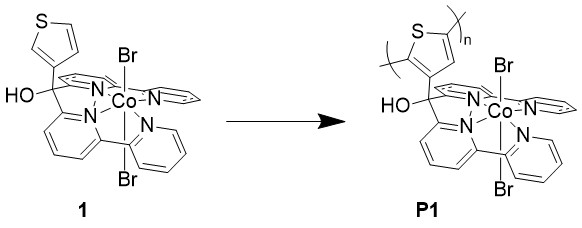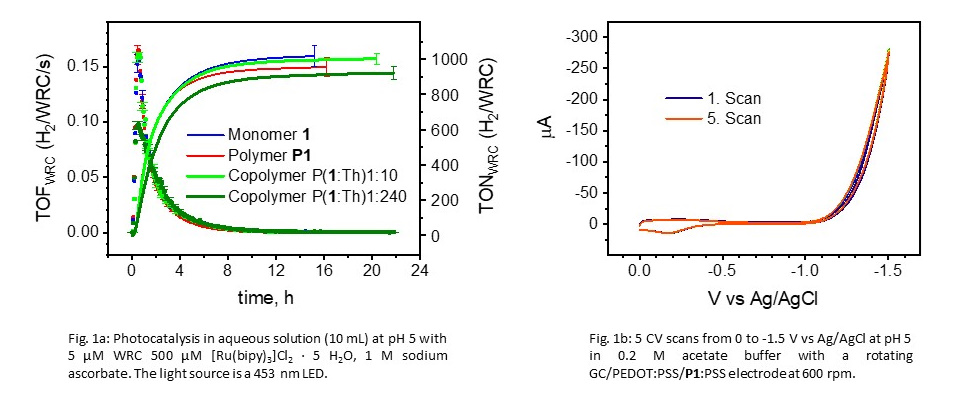Photo- and Electrocatalysis with a Polymerised Water Reduction Catalyst
During the last years our group was working on the improvement[1] and immobilisation of water reduction catalysts (WRC). Polymerisation of the WRC allows for immobilisation, recycling and the introduction of further functionalities in the backbone such as proton shuttling or conductivity. A variety of monomers containing catalytically active units were synthesised, polymerised and tested in photo- and electrocatalysis for the hydrogen evolution reaction (HER). Here we present results of our thiophene derivative 1.

Monomer 1 was synthesised in an analogous way to established WRCs[1]. Polymerisation was done in a mixture of MeCN and water with persulfate. Photocatalysis of polymer P1 with [Ru(bipy)3]Cl2 as photosensitiser and ascorbate as sacrificial electron donor was performed to test for HER activity. Surprisingly, P1 showed good photocatalytic activity equal to the one of the monomer 1, independent of chain length. Even copolymerisation with thiophene (Th) in different ratios gave polymers with comparable photocatalytic properties (Fig. 1a).
Electrocatalysis was performed on a glassy carbon (GC) rotating disc electrode. The polymer was immobilised in a blend with NaPSS on PEDOT:PSS. The GC/PEDOT:PSS/P1:PSS electrode showed good stability and electrocatalytic activity in cycled potential studies (Fig. 1b).

[1] Stephan Schnidrig, Cyril Bachmann, Peter Müller, Nicola Weder, Bernhard Spingler, Evelyne Joliat-Wick, Mathias Mosberger, Johannes Windisch, Roger Alberto, Benjamin Probst, ChemSusChem, 2017, 10, 4570-4580.